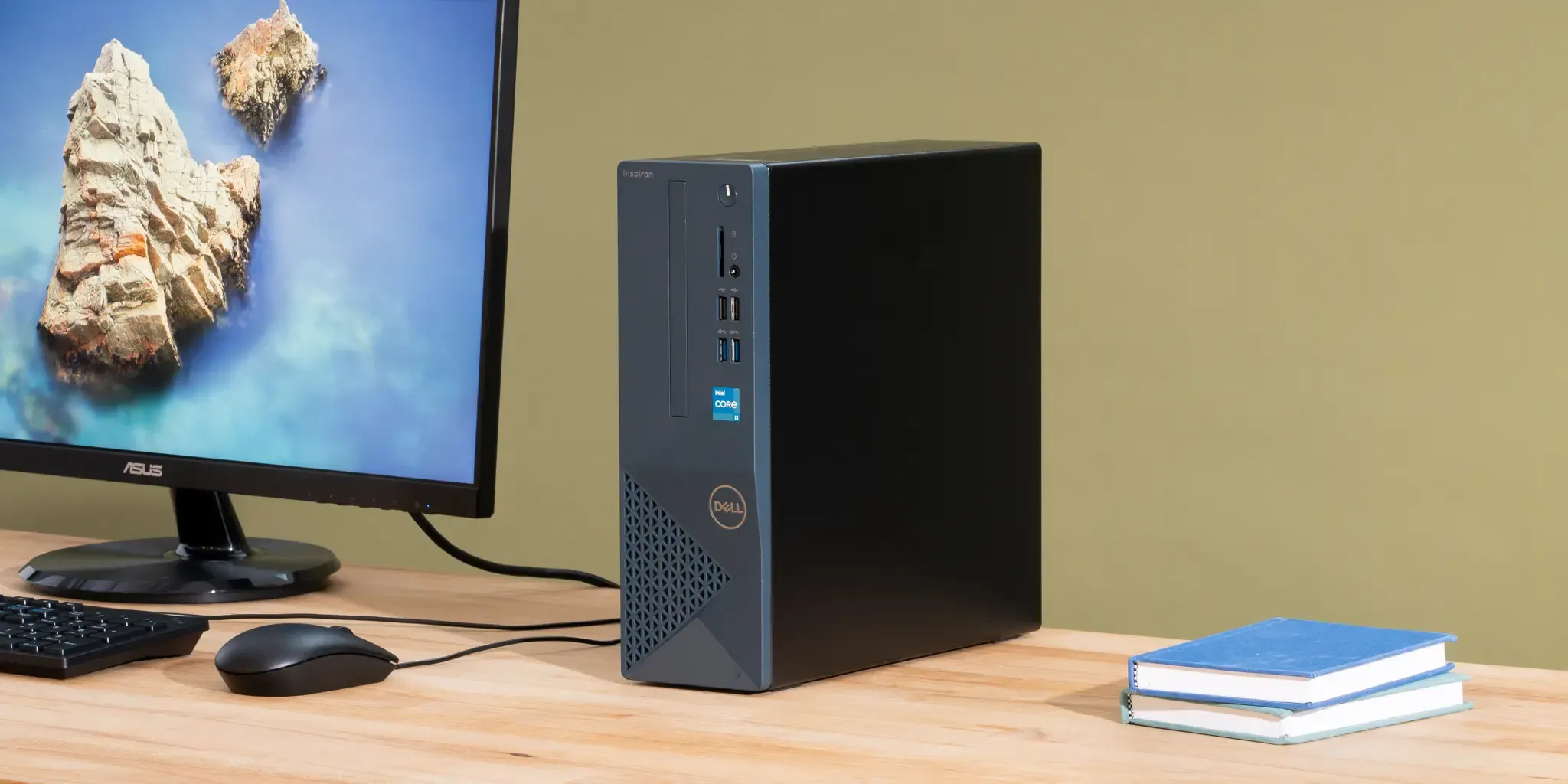

In today’s digital age, having a reliable desktop computer for everyday tasks and internet browsing is essential. Let’s explore this topic in more detail with Shady Bears below. We’ll dive into the world of budget-friendly desktops that offer great value for users who don’t need high-end performance but still want a smooth computing experience.
When we talk about budget desktops for everyday tasks and internet browsing, we’re referring to computers that typically fall in the $300 to $600 price range. These machines are designed to handle basic computing needs efficiently without breaking the bank. While they may not be suitable for intensive tasks like video editing or gaming, they excel at common activities such as web browsing, document creation, email management, and light multimedia consumption.
Budget desktops often come with modest specifications that are more than adequate for most users. You can expect to find processors like Intel Pentium or Celeron, or AMD Athlon or Ryzen 3 series. RAM typically ranges from 4GB to 8GB, which is sufficient for multitasking with everyday applications. Storage options usually include either a smaller SSD (128GB to 256GB) for faster performance or a larger HDD (500GB to 1TB) for more capacity.
One of the advantages of choosing a desktop over a laptop in this price range is that you often get better performance and upgradeability. Desktops have more space for cooling, allowing components to run at higher speeds for longer periods. Additionally, many budget desktops allow for easy upgrades of RAM, storage, and sometimes even the processor, extending the life of your investment.
Read more: Important Laptop Specifications Explained for Beginners
When shopping for a budget desktop for everyday tasks and internet browsing, there are several key features you should consider:
The processor is the brain of your computer, and even in budget models, you want to ensure it can handle your daily tasks smoothly. Look for Intel Pentium or Celeron processors, or AMD Athlon or Ryzen 3 series. These processors offer a good balance of performance and affordability. While they may not be as powerful as their higher-end counterparts, they are more than capable of handling everyday computing tasks and internet browsing without hiccups.
Random Access Memory (RAM) is crucial for multitasking and overall system responsiveness. For budget desktops, aim for at least 4GB of RAM, but 8GB is preferable if it fits within your budget. With 8GB of RAM, you’ll be able to run multiple applications simultaneously and have numerous browser tabs open without experiencing significant slowdowns.
When it comes to storage, you’ll typically have a choice between a hard disk drive (HDD) or a solid-state drive (SSD). HDDs offer more storage capacity for the price, while SSDs provide faster performance. If possible, opt for a desktop with an SSD, even if it’s smaller in capacity (128GB or 256GB). The speed boost you’ll experience in boot times and application loading is worth the trade-off in storage space. You can always add an external HDD later for additional storage if needed.
Ensure the desktop has a good selection of ports for connecting peripherals and external devices. Look for models with multiple USB ports (including at least one USB 3.0 port for faster data transfer), an HDMI port for connecting to a monitor or TV, and an Ethernet port for wired internet connection. Wi-Fi capability is also important for wireless internet access, so check if it’s built-in or if you’ll need to purchase a separate Wi-Fi adapter.
Most budget desktops come with Windows 10 Home pre-installed, which is suitable for everyday tasks and internet browsing. Some may offer the option of Linux, which can be a good choice if you’re comfortable with it and want to save on the Windows license cost. Avoid desktops that come with outdated operating systems or those that require you to install the OS yourself unless you’re confident in doing so.
Now that we’ve covered the key features to look for, let’s explore some of the best budget desktops available in the market for everyday tasks and internet browsing:
Dell’s Inspiron Desktop series offers excellent value for budget-conscious consumers. These desktops typically come with Intel Pentium or Core i3 processors, 8GB of RAM, and a combination of SSD and HDD storage. The Inspiron desktops are known for their reliability and Dell’s good customer support. They also offer easy upgradeability, allowing you to extend the life of your system as your needs grow.
The Dell Inspiron Desktop often includes features like built-in Wi-Fi, Bluetooth connectivity, and a decent array of ports. Its compact design makes it suitable for small spaces, and the included keyboard and mouse add to its value proposition. While it may not be the most powerful option, it’s more than capable of handling everyday tasks and internet browsing with ease.
HP’s Pavilion Desktop line is another excellent choice for budget-friendly computing. These desktops often come equipped with AMD Ryzen 3 or Intel Core i3 processors, 8GB of RAM, and either SSD or HDD storage options. The Pavilion desktops are known for their sleek design and good build quality, making them an attractive option for home or office use.
One of the strengths of the HP Pavilion Desktop is its expandability. Many models come with multiple expansion slots and bays, allowing you to add more storage or even a dedicated graphics card in the future. This makes it a good choice for users who anticipate their computing needs might grow over time.
Lenovo’s IdeaCentre Desktop series offers a range of budget-friendly options that are perfect for everyday computing and internet browsing. These desktops often feature Intel Pentium or AMD Athlon processors, 4GB to 8GB of RAM, and various storage configurations. The IdeaCentre desktops are known for their compact design and quiet operation, making them ideal for home use.
One of the advantages of the Lenovo IdeaCentre Desktop is its focus on connectivity. Many models come with a good selection of front-facing ports, making it easy to connect external devices. Some versions also include built-in DVD drives, which can be useful for those who still work with optical media.
Acer’s Aspire Desktop line offers solid performance at budget-friendly prices. These desktops typically come with Intel Pentium or Core i3 processors, 4GB to 8GB of RAM, and either SSD or HDD storage. The Aspire desktops are known for their reliability and good value for money, making them a popular choice for home and small office use.
One of the strengths of the Acer Aspire Desktop is its balance of performance and affordability. While it may not have all the bells and whistles of more expensive models, it delivers where it counts for everyday tasks and internet browsing. Many models also come with useful software pre-installed, adding to their out-of-the-box value.
Read more: How to Choose the Right Laptop for Online Learning
Once you’ve chosen and set up your budget desktop, there are several ways to ensure you get the most out of it for everyday tasks and internet browsing:
Regular maintenance is key to keeping your budget desktop running smoothly. Keep the operating system and all software up to date to ensure you have the latest security patches and performance improvements. Use built-in tools like Windows Defender for antivirus protection, and consider a free malware scanner for additional security.
Physically cleaning your desktop is also important. Dust can accumulate over time and affect performance by causing overheating. Every few months, carefully clean the vents and, if you’re comfortable, the inside of the case to keep your desktop running cool and efficiently.
Even budget desktops can be optimized for better performance. Start by removing any unnecessary programs that came pre-installed on your system. These “bloatware” applications can slow down your computer and take up valuable storage space.
Consider using lightweight alternatives to resource-intensive programs. For example, use a lightweight PDF reader instead of Adobe Acrobat for basic PDF viewing, or opt for a streamlined office suite like LibreOffice instead of Microsoft Office if your needs are basic.
Adjust your Windows settings for performance rather than appearance. This can be done by right-clicking on “This PC,” selecting “Properties,” then “Advanced system settings,”